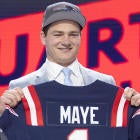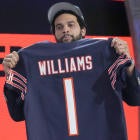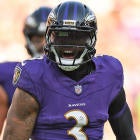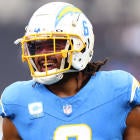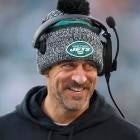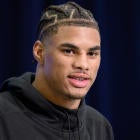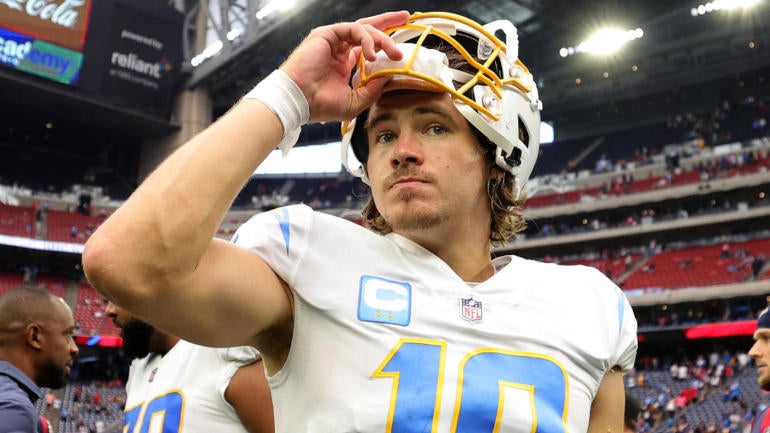
Coming into this season, it was reasonable to expect that the Los Angeles Chargers would take a significant step forward. They added a ton of talent to their defense, and last season, they had one of the league's top offenses despite working with a clearly subpar offensive line. Perhaps they could even challenge the Kansas City Chiefs for AFC West supremacy.
Instead, while the Chargers are 5-3 through their first eight games of the season, they have not taken the next step. L.A. has actually been outscored by 22 points this season; the defense remains among the worst in the NFL despite the talent infusion, and the offense has actually regressed from where it was a year ago.
The Chargers in 2021 ranked fourth in yards, fifth in points, fifth in yards per play, second in points per drive, fourth in the share of drives that ended in a touchdown or field goal, and fourth in both Football Outsiders' DVOA and TruMedia's version of EPA per play. This season, they're ninth in yards, 13th in points, 23rd in yards per play, 14th in points per drive, 12th in the share of drives ending in a score, 21st in DVOA, and 17th in EPA per play.
As they prepare for Sunday night's game against the 49ers in San Francisco -- 8:20 p.m. ET on NBC (stream it on FuboTV) -- explanations are not difficult to find. The first and most obvious cause of regression is injuries. Keenan Allen has played just 45 snaps all season. Rashawn Slater has been out since Week 3. Corey Linsley has missed two-plus games due to injury. Mike Williams may still miss two more. Josh Palmer missed one as well. Isaiah Spiller was injured to begin the season and has yet to really hit the ground running. Even Justin Herbert had to play through fractured rib cartilage for multiple weeks.
But there also seems to be something inherent in the design of the offense itself that undermines the talent on hand.
This can be most obviously seen in the Chargers' short-yardage struggles. Offensive coordinator Joe Lombardi repeatedly calls the same kinds of plays in those situations, and defenses absolutely know what's coming. To wit: On 27 dropbacks on third or fourth down with two or fewer yards to go, the Chargers have almost exclusively operated in the quick game. According to TruMedia, 60% of Herbert's throws on those downs have been released within 2.5 seconds of the snap. The league average is just 47%. Perhaps unsurprisingly, Herbert's -0.07 EPA per dropback on those plays ranks just 17th in the NFL.
And it's not just the passing game that has had some struggles in short-yardage situations. The run game has arguably been even worse. L.A.'s 25 carries on third or fourth down with two or fewer yards to go have gained an average of just 2.0 yards a pop -- 28th in the NFL. The offensive line has gotten almost no push, with the average carry losing 0.2 yards before first contact.
Perhaps that's because Lombardi repeatedly crowds the line of scrimmage with bodies in tight formations and tries to run directly up the middle: 44% of L.A.'s rush attempts in these situations have gone up the middle, per TruMedia, compared with a league average of just 32%. As a result, the Chargers have achieved a first down just 56% of the time, compared with a league average 70% rate. Austin Ekeler is a powerful runner for his size, but he's also not necessarily equipped to just run it right up the middle with a bunch of big dudes clogging his running lanes.
Lombardi noted this week that the Chargers don't have a ton of speed among their offensive skill position players, and that shows up in their aversion to throwing the ball down the field. Herbert has one of the strongest arms in the NFL, yet passes of 20-plus air yards account for only 8.3% of his throws -- a rate that ranks 26th in the NFL. He's 31st in average depth of throw (6.3 yards) and 30th in average air yards in relation to the first-down market (-2.4 yards). Amazingly, Herbert throws even shorter on play-action dropbacks, with an aDOT of just 5.07 yards that ranks ahead of only Mac Jones. Most quarterbacks throw deeper on those plays, but not Herbert.
Because of the makeup of the team's pass-catcher corps, Herbert also has to throw into tight windows far more often than is ideal. According to NFL.com's Next Gen Stats, 17.1% of his throws have gone into tight windows, the 10th-highest rate in the league. Williams excels in contested catch situations, but the same isn't necessarily true of the rest of the receivers. Perhaps that's why Herbert checks in below average in completion percentage over expectation despite his ability to make damn near any throw you ask him to make.
With Allen and Williams likely still out on Sunday night due to their respective injuries, it seems unlikely that many (or any) of these issues will be rectified any time soon. If things keep going this way, it might be time for Brandon Staley (or another coach, if Staley doesn't last beyond the season) to change gears and pivot to a different offensive coordinator who is willing to design a more adventurous system. And it's certainly well past time for general manager Tom Telesco to be aggressive about adding more speed and athleticism to the receiving corps.














